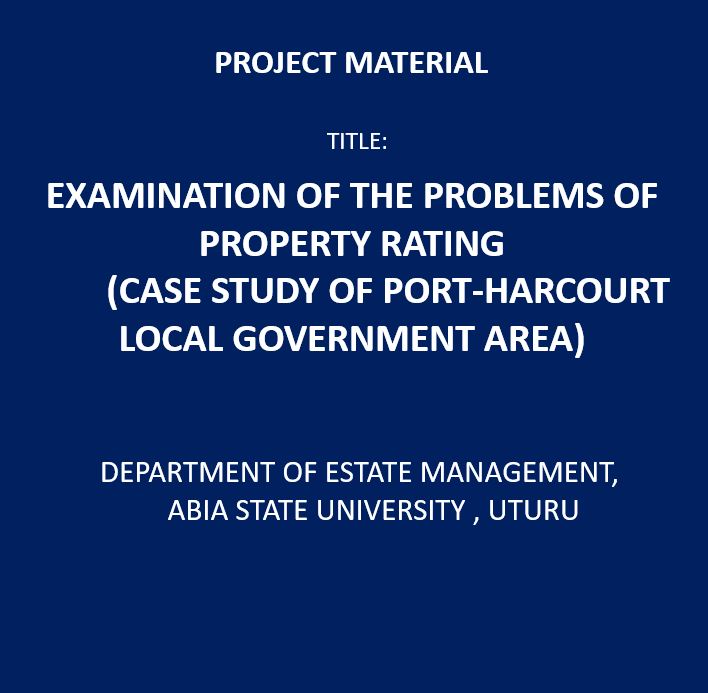No products in the cart.
Examination of the Problems Of Property Rating
₦10,150.00
EXAMINATION OF THE PROBLEMS OF PROPERTY RATING
- CASE STUDY: PORT-HARCOURT LOCAL GOVERNMENT AREA
- PROJECT YEAR: 2022
- NUMBER OF PAGES: 68
- FILE TYPE: DOC
- DEGREE: BACHELOR
- INSTITUTE: DEPARTMENT OF ESTATE MANAGEMENT, ABIA STATE UNIVERSITY , UTURU
ABSTRACT
One common problem faced by rating authorities in different part of the nation is the unwillingness of rate payers to voluntarily comply with rating officers in paying what is levied on them as property rate. This research was aimed at analysing the problems militating against effective property rating administration in Rivers State with particular reference to Port Harcourt Local Government Area. In order to achieve the prime purpose of the study, the researcher adopted simple random sampling technique in sourcing primary and secondary data from the respondents which include: property owners, (Rate payers), selected council staff and estate surveyors and valuers in the area of study. Simple tables and percentages have been used to analyze the empirical data that were obtained from the study. Major findings in the study include the absence of estate surveyors and valuers in the employment of the local government council; high cost of property rating administration; ignorance of the rate payer; lack of continuity of governance at the local government level, security challenges and mis-use of revenue realize from property rating assessment and collection in the area. Consequently, it has been recommended that professional estate surveyors and valuers be employed not only in Port Harcourt Local Government but all other councils in Rivers State; appropriate enlightenment campaign about relevance of property rating – training and re-training of local government staff; and ensuring adequate security of life and property are major solutions to address the problem of rating assessment and collection in the area. The study has been divided into 5 conventional chapters, namely chapter (1) which is the introduction, chapter (2) is the literature review chapter (3) is the research methodology, chapter (4) is data presentation analysis while chapter (5) is the summary of findings, recommendations and solution.
No product has been found!
